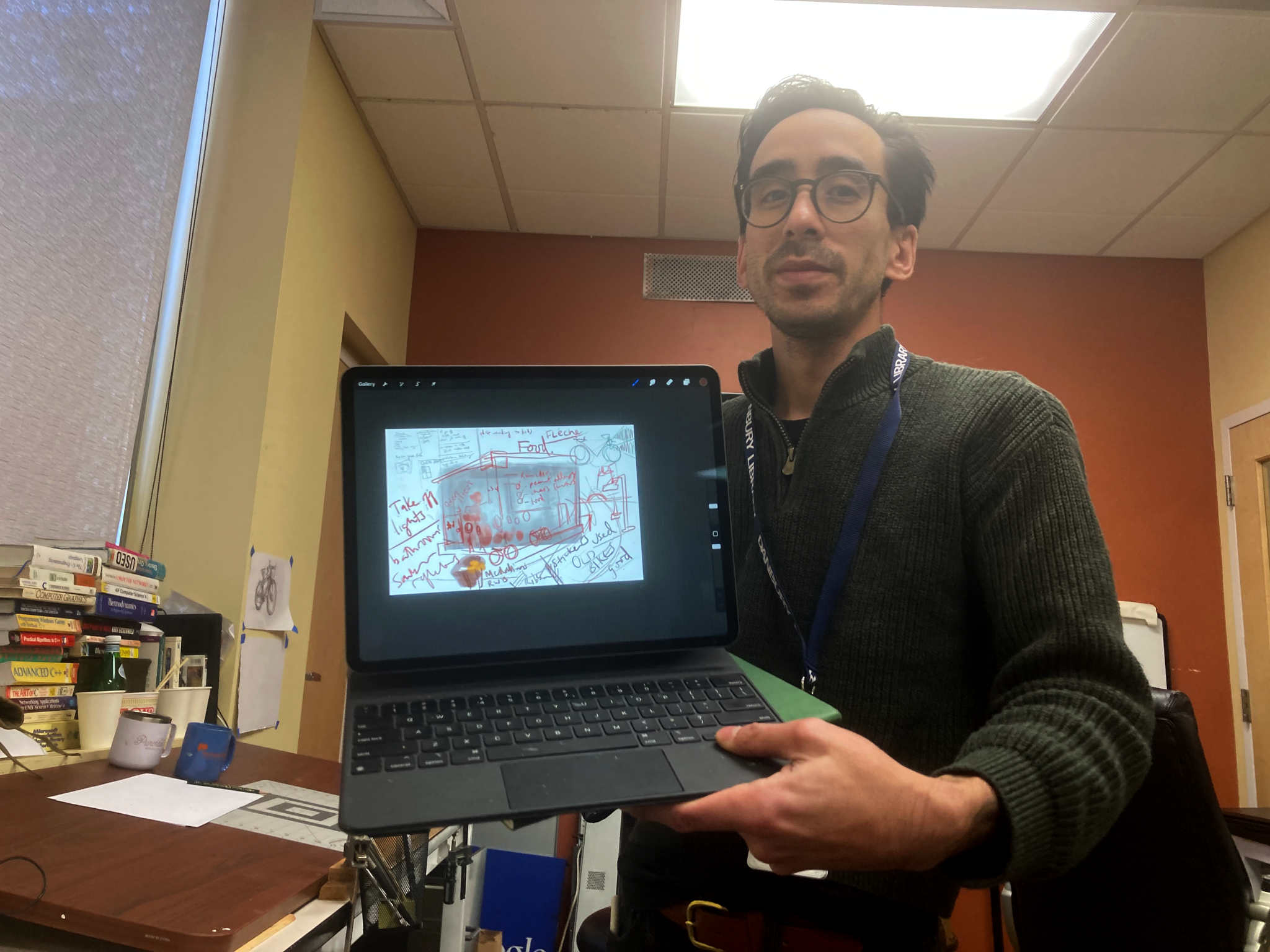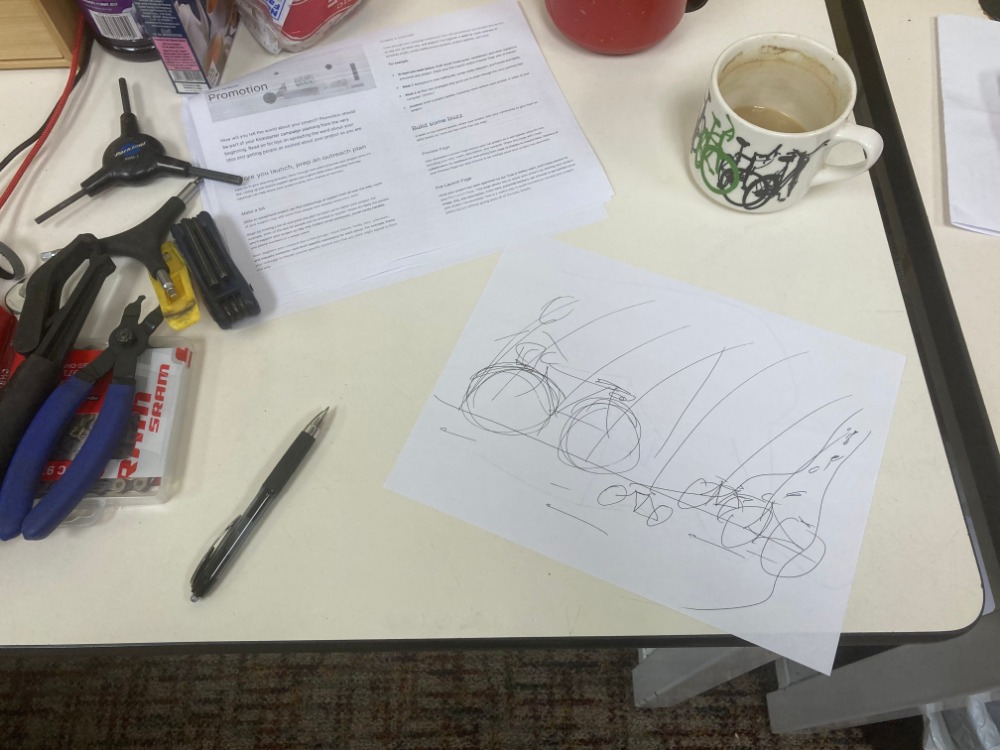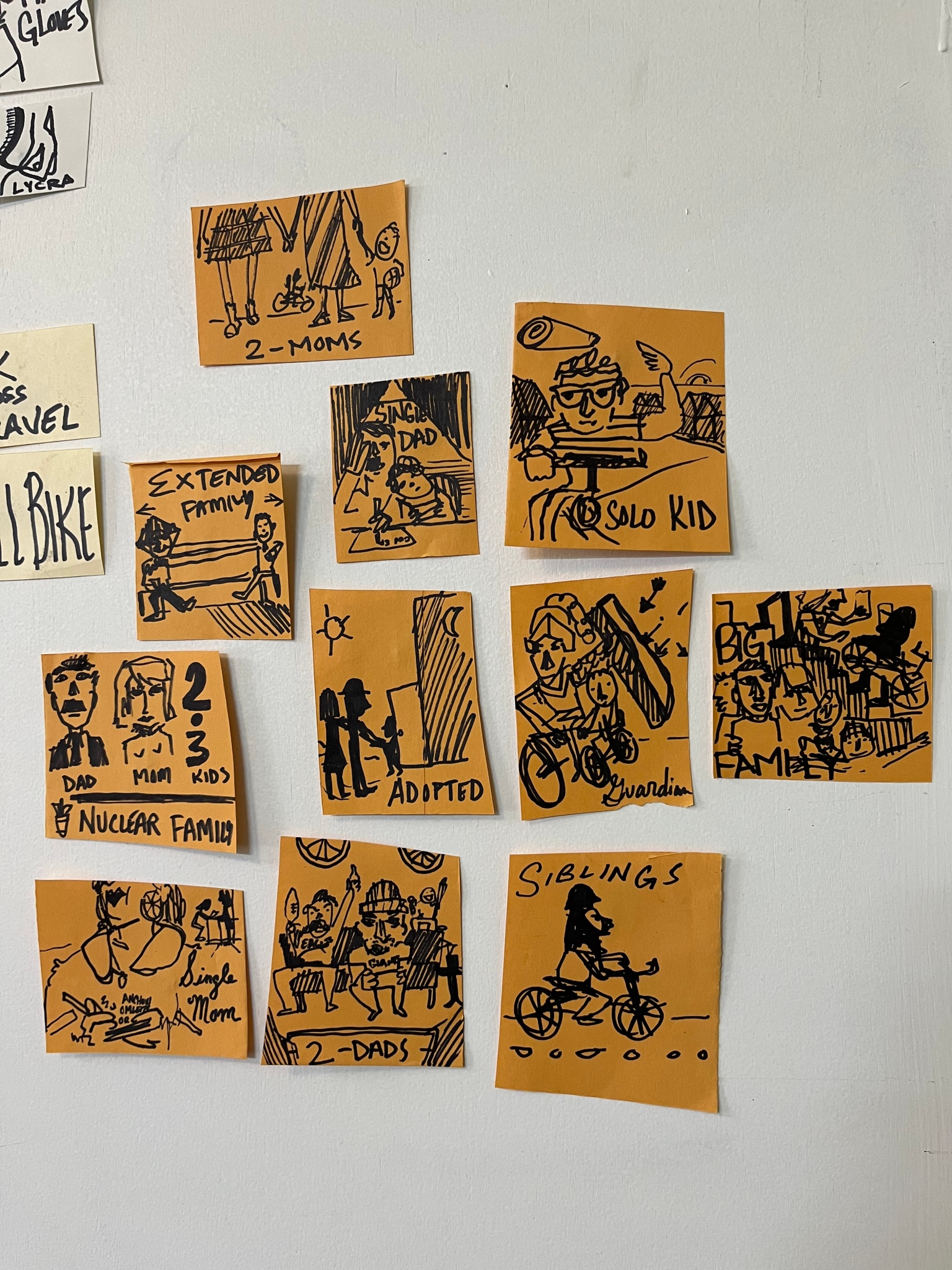A BREVET STARTS when you wake up. Ride preparation is backstory. It ended last night. This morning, in medias res, you do what randos have always done:
- Eat
- Dress
- Stop singing and find your hoody

Controle 1, P.S. 314, 08:00

IT WAS EIGHT in the morning, but the gray chill wasn’t easing off. “You’ll warm up as we go,” I assured my companions, who were wearing their new real bike shorts, and we went R OUT OF CONTROLE ONTO BROADWAY.


THE SEVEN GATES 50K is a three-controle out-and-back. It starts and ends in Inwood, at the top of Manhattan, so the first thing we do is leave New York City.
Marble Hill used to be part of both Manhattan, the actual island, and Manhattan, the borough, which back then were the same thing. When the Harlem River was rerouted to truncate the tip of the island, Marble Hill got amputated. In all meaningful ways, it’s now fused to the Bronx; but civically, it’s still a ghost digit of Manhattan, the dotted outline of a toe up where no toe should be. It’s populated by the tormented spirits of doomed New Yorkers, stranded forever in a twilight existence where the subways vanish. But the Broadway Bridge goes there.

STRAIGHT ON over Harlem River: The whir of drivetrains, the wailing of despondent souls

ON THE OTHER SIDE, my companions offhandedly mentioned they might be feeling the slightest sensation of coolness, so I berated them. “Are you randonneurs or children?” I sneered. “Are you riding? Like hardmen? Or OHHH, should we stop for COCOA at some nice little WARM PLACE?”


Cocoa at warm place

MILE 1.3: ENTER VAN CORTLANDT PARK BIKE PATH. If you don’t have a cue sheet, but you know where to jink over to the left past the bones of the abandoned train platform, where it doesn’t necessarily look like you should, you’ll be on a dirt-road-looking thing that soon narrows. If you did it accidentally, the sensation of being in the wrong place may stop you. You didn’t see any NO BIKES signs, but you might decide not to go in.
But if you know…

The bottom mile and a half of what used to be the Old Putnam Railroad is now rideable hardpack, sometimes with a little mud—or more than a little—and always with stray roots and rocks and half-buried railroad ties. Then so sharp you can feel the surveyor’s line, the paving starts, and soon after this passage into Yonkers comes a passage both more profound and more nasal: Dad has promised to reveal to you the secret of the snot rocket.

Photoshopped for reduced disgustingness

Boys!
Stay right!
THE PHRASES “NOT as steep as Henshaw, but longer” and “just downshift and you’ll be fine” trickled away almost as soon as Dad said them, weeks ago. “Two-mile climb” has remained solid in memory, and you have the nebulous sense it’s coming up. Is this it? No, this is flat. Is this it? No, this isn’t it. Is this it? Are we climbing? No. Then this isn’t it.
But now the surface has been tilted slightly up for a ways, and it’s tilting up slightly more. “Is this it?”
“This is the beginning of it…”

“STOP!” BELLOWS THE voice falling further behind. “STOP! WAIT UP! STOP! HEY! YOU GUYS! HEY! HEY!”
Like much of this route, the leg we’re on wavers more-or-less straight, with no intersecting trails or cross streets. There’s nowhere to go but forward or backwards. Instructions have been given a thrice of thrices: If we’re separated, we’ll meet up at the top of the climb, which is Gate 1.
But this rider, who on the flats enjoys passing his clubmates and wiggling his hiney at them, can be lazy on hills, a laziness that turns to indifference when he’s passed and fury when he’s dropped. His countertactic is to allow the escape group to build their lead until the gap seems too wide to bridge, and then, many heartbeats after seasoned observers will have written off his chances, to brake, plant his feet, stand in the middle of the lane, and holler.
There’s mild discussion at the front of the group, but these domestiques have been riding with him a long time. They continue to gain elevation. The occasional two-story roof shows through breaks in the treeline; the toys in those houses’ front yards look like toys. The echoing sounds of outrage become more distant.
Then an increase in volume and a decrease in echo, the words now intelligible: FINE! I’M SO MAD, I’M GONNA PASS YOU! repeated several times, and soon a red-hoodied blaze churns past on the left, past his companions, one of whom latches on and sprints. The other companion smiles silently and watches them race around the final bend—to Gate 1.

YOU DID THE two-mile climb. What do you get on the way back?
A two-mile descent!
Stay right!

EVERY PETITE BREVET—yearly, except I couldn’t get it together last year—I add another element. Last time it was more distance. This time it was more distance and a cue sheet.
Seven times between Manhattan and Elmsford Falls, the rail trail crosses a street or entry road. Cars could turn onto the trail if there was nothing to stop them, so there are not just bollards, but gates.
It may be conceivable that this only happens six times, and that the route designer, who’d already ordered medals with SEVEN GATES 50K engraved on the backs, had to go looking for a seventh gatelike thing on the final pre-ride, but this could not be confirmed by press time. Regardless: This cue sheet has a column called GATE, in which appear the numbers 1 through 7, for riders to whom monitoring TOTAL and LEG seems like less fun than you should have on a Saturday.

A seventh gatelike thing

Stay right!
Bike up, hold your line!
“IT FEELS A lot stronger after lunch, doesn’t it?”
“My legs feel brand new!”
Mile 15.8 is the turnaround, Elmsford Deli.
Around mile 18, a boy paying too much attention to giving his brother a very sweet pep talk and not enough to—something, we’ll never know what—went down. I heard the tone of sincere encouragement passing between them ahead, and then there was a low tangle of bike, boy, and lost shoe, and that sound of short metal tubing and forty pounds of flesh hitting pavement and sliding.
I have failed him at this moment before. When he got creamed on the flat between the two Little Red Lighthouse descents, and I carried a 16″ bike and a screaming six-year-old down to the bottom, I was angry. It was with myself, but that distinction clarifies too late to make a difference to a hurt child. And when he ate it on the playground and the first-aid pack with FAMILY BIKE on it in green marker wasn’t in my pannier, I had to borrow whatever little Band-Aid was offered from the bottom of a purse.
So first I did not run him over, and then as he shrieked so hard, still sprawled and tangled, that his voice distorted like a guitar, I leaned my head tube against a bench back and unbuckled the pannier and dug out the first-aid pack.
If this story had a different ending, my first words being Pick it up would now be slotted in behind the other things I regret in painful detail years later. But gently and firmly, opening the pack: Pick it up, you can get up, and he did. I helped him out of his frame. His brother retrieved the shoe.
The wailing had stopped. I noticed the suddenness.
His hands were okay—half-gloves—but there was road rash. Dirt was ground into abrasions up his leg and there was a good half-inch rip filled with blood, and a couple of smaller versions of it.
“It just stings,” he said. His voice was shaky. I felt my surprise change my face. “It’s fine,” he said again, still uncertain. “It just stings.”
I gave him a wipe and had him gently cleanse the wound while I got the big Band-Aid ready. How the heck had he done that? He didn’t know.
“I think you were doing a good job of encouraging your brother, and talking to him a lot, so you weren’t paying attention to the road.”
He said, “The thing about helping people is you don’t help yourself.”

“I’M VERY IMPRESSED with you right now,” I said as I bunched up the first-aid wrappers to shove into an outer pannier pocket.
“I’m acting like Johnny Hoogerland right now,” he said.
As we rode out, he murmured, “I didn’t know I was like that.” He said it again, maybe twice more, only partly to me.

MILE 20.1: X SAWMILL PKWY, R INTO CONTROLE. Controle is unstaffed, so timestamped receipts take the place of a signature.

Starbucks Cake Pops: Not as good as expected

RANDONNEURING, LIKE MOST things, is mostly about the basics.
- Eat again.
- While you are doing your shoulder check, do not run off the road.
- If your penis hurts, put Lantiseptic on it.
- The Lantiseptic will warm up.
Is this the two-mile descent?
No.
Is this the two-mile descent?
No.
Is this the two-mile descent?
Are we descending?
No.
Then this isn’t it.
Heads up!
Stay right!


“THEY SMELL THE BARN,” says Laurent, the man I followed around for my first year randonneuring, to explain why bicycles speed up at the end of a brevet.

MILE 29.6: SOUTHBOUND BROADWAY SIDEWALK. CAUTION: PEDESTRIANS, DRIVEWAYS.
We’re moving in 2014, and not sure where yet, so the randonneuring element I’ll add a year from now may reveal itself when we get there. If not, time limits to the controles are the obvious addition. For what is a brevet without a faint, constant trickle of fear?
But months before the Who Knows Where We’ll Land 75K, there will be the 40-mile (64-kilometer) Five-Boro Bike Tour, a fitting goodbye lap of the city where you were born, and with it maybe a little more understanding that even compared to grownups, a little dude like you can sling some respectable skills.
Or it may just be a bunch of whining—you never know what’s coming, this far out.



Johnny Hoogerland was hit by a car and thrown through the air into a barbed-wire fence within minutes of our sitting down to watch our first Tour de France together. Parts of him were torn to ribbons. He finished the stage.

Every rider has a rider he dreams about.
I dreamed of one day being as good as Barthélemy.
—The Rider
Tim Krabbé























